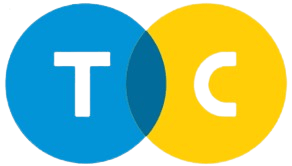What should you know before using data modernization or analytics services? Corporate applications that leverage data in decision-making are often more efficient than conventional activities. However, managers, data engineers, and analysts must ask some questions before they get started with data analytics modernization, and this post explains how.
What is Data Modernization?
Data modernization means migrating data from obsolete ecosystems to more advanced database management systems (DBMS). Organizations can utilize data modernization services to benefit from the latest statistical models and cloud computing tools.
Modernizing your IT infrastructure also makes your communications and business intelligence more immune to cyberattacks. Besides, analysts can leverage the new energy-efficient ETL (Extract, Transform, and Load) techniques in integrated data engineering solutions.
Businesses can transfer data from their offline, on-premise systems to remote servers, building virtual computing experiences via cloud platforms. Moreover, data modernization services enable flexible reporting, real-time collaboration, and more extensive data governance.
What is Data Analytics?
Data analytics combines computer sciences with mathematical modeling to study data patterns through statistical techniques. Analytics services assist corporations in developing more efficient business practices.
A data analyst cleans databases to remove errors in statistical modeling, recognizes trends in datasets, and visualizes them for reporting purposes. Their analytical mindset and mathematical vigor will obtain high-quality business insights.
Data analytics services can be descriptive, diagnostic, predictive, or prescriptive. Meanwhile, international enterprises hire data engineering teams to develop more secure processing environments and required storage solutions.
How to Get Started with Data and Analytics Modernization
While trending analytics services attract business owners, managers must ensure their data strategy focuses on relevance, financial feasibility, and accuracy. They must also consider the differences between the available data modernization firms because their analytics services, visualization interfaces, and engineering solutions offer unique pros and cons.
Specifying the organization’s needs to express what you want to accomplish is essential to avoiding conflicts with data processing partners. Simultaneously, remember that selecting unsuitable tools and workflows will cause significant losses, leading to a complete waste of company resources.
Therefore, you want to know how to prepare for a transition to the latest engineering and data analytics services. We have enlisted the considerations you must examine to minimize the risk of wasting money and time.
Questions to Ask Before You Get Started with Data Analytics Modernization
1| Would You Like to Modernize a Few Departments or the Entire Organization?
Corporations with a limited budget will use data modernization services focused on one business unit. Doing so enables them to move toward a more efficient work environment despite the financial constraints.
However, this phase-wise manner implies that small businesses must spend more on coordinating the analytics services when modernizing another department’s data operations. Companies require new schedules and timelines whenever they redirect their efforts to improve a different department.
So, a complete transition to modern data processing tools and techniques takes longer if a company operates at a macro scale. Meanwhile, established companies that deliver their products and services internationally can benefit from a 360-degree approach. After all, organization-wide holistic transition helps you accomplish faster progress and minimize technological conflicts between some departments.
2| How Many Times Should You Review and Revise Your Data Strategy?
An unplanned approach to installing the latest data engineering solutions will often end in a financial disaster. Furthermore, failed migration efforts discourage corporations from committing more resources to data modernization services.
A data strategy aligns your business objectives with your data management operations. It helps you understand what type of data you need and how to collect it. Data strategists also leverage data analytics services more efficiently by eliminating irrelevant activities from the workflows.
Still, you want to revisit and update your data modernization strategy when you notice remarkable gaps between the expected milestones and on-ground progress. A smaller organization will encounter fewer issues meeting deadlines, but a more prominent business will likely run into multiple scheduling problems.
These instances affect the time required to migrate to the latest data engineering solutions. So, the transition takes much longer than anticipated, suggesting large companies must revise their data strategy more often.
3| How Will Replacing Excel Workbooks with More Robust Platforms Create Value?
Microsoft Excel, Google Sheets, or OpenOffice Calc are excellent software applications that facilitate many activities in standard data analytics services. Therefore, small and medium businesses wonder whether they must migrate to more advanced solutions.
Yet, upgrading your analytics through data modernization services helps you optimize your workflows on a much grander scale. While the simple spreadsheet and workbook management tools are user-friendly, managers must continuously rely on nested formulas and functions.
You can use program extensions or scripting languages to automate calculations, but hardware limitations will always affect how long it takes to generate reports. Therefore, corporate analysts must compare spreadsheet analytics with cloud-based analytical platforms that provide the latest hardware virtualization features in data engineering solutions.
There are many points of interest to consider when estimating how using more sophisticated tools benefits you in the long term. For example, ask the following questions to get started with data analytics and modernization.
- How many complicated formulas and interlinked spreadsheets does your organization currently uses?
- Will switching to a customized cloud analytics platform eliminate inefficiencies in your analytics operations? E.g., Nested IF functions, syntax errors, and manual data sorting.
- Is your available IT infrastructure sufficient for your data processing needs?
- Will you require more advanced analytics tools after realizing your business growth milestones?
- How will it help you financially if you upgrade your system today via data modernization services?
- Will it cost you more if you delay this transition?
4| Which Data Architecture Will Satisfy Your Requirements Using Minimal Computer Resources?
Real-time data analytics enable companies to get dynamic dashboard reports. Such dashboards quickly depict the relationship between different performance variables. Additionally, managers and professionals in various departments can simultaneously monitor these dashboards.
However, collecting, storing, formatting, transforming, analyzing, visualizing, and streaming data consume many computing resources. When data modernization services migrate these operations to a cloud platform, your team needs to track the activities consuming more computer resources.
Likewise, desktops and in-office servers consume electricity to render the streamed data in the browsers used by employees. So, you must understand how using the latest data analytics, and engineering solutions affect your operating costs.
Companies should also remember the following.
- Big data analytics requires even more resources to offer continuous access to data warehouses and lakes.
- Small or medium businesses build data replication layers using CDC (Change Data Capture).
- International organizations must invest more in developing efficient data architecture.
5| How to Plan the Financial Aspects of Data Modernization?
Analysts require financial resources to get started with data analytics and modernization. Several brands like Oracle, IBM, Google, Microsoft, and Tableau provide enterprises with cloud analytics services integrated with machine learning and business modeling features.
Each platform has its own unique pricing strategy, so corporations must select the services after assessing the costs and benefits. Besides, managers must effectively discuss how upgrading to innovative data analytics services will improve the company’s financial performance. Later, they can approach financial institutions or investors to explore fundraising opportunities.
Planning the money matters associated with data modernization can be more challenging for specific business operations. Consider the difference between production management and branding.
It is easier to demonstrate how analytics can identify manufacturing problems and supply chain issues affecting profit margins. Therefore, you will quickly get budget approval to modernize corresponding analysis tools. Meanwhile, the same task will be more difficult if you want to finance advanced analytics services for branding, and some stakeholders oppose the proposal.
6| What Can You Do to Minimize Transition Challenges?
Small firms can export their Excel worksheets in CSV format and use them across multiple cloud analytics services by clicking a single import button. Similarly, a department maintaining a small database can quickly process it with different tools. So, transition challenges are virtually nonexistent if companies are too small or databases have a simple structure.
Prominent companies face more challenges when migrating from old systems to newer data engineering solutions. They keep massive databases with intelligence dating back decades. Some established businesses are hundreds of years old. Imagine how much data they must transfer from legacy systems to cloud tools.
Data modernization services assist businesses in overcoming transition challenges by offering reliable backward compatibility. These facilities will also keep the data integrity intact. Therefore, you can be sure there will be no data corruption or unauthorized modifications.
Some professionals help businesses separately modernize critical and non-critical business activities to reduce downtime and productivity losses.
7| How Long Will It Take Your Employees to Learn New Skills?
Different individuals learn at different paces. Some of your staff members might be technologically competent. Others will only know basic skills like emailing and maintaining daily progress reports. Skills and learning abilities also correlate with employees’ age, academic training, and professional experiences.
When organizations get started with data analytics and modernization, employees must ask every question they have concerning newly introduced services. Moreover, frequently conducting workshops and seminars may benefit all stakeholders, i.e., experienced developers and non-technical workers.
So, be mindful of the learning curve associated with a platform. After all, each software application requires a particular skill combination, without which employees cannot maximize productivity.
- Data engineering solutions require skills like hardware engineering, server management, energy optimization, pipeline development, and repairs.
- Visualization techniques demand creativity, designing, and reporting communication skills. Employees must be comfortable with the new platform’s visualization options.
- Analytics services work best when employees possess strong analytical skills, mathematical aptitudes, and business knowledge.
Conclusion
Cloud computing, machine learning, and visual dashboards that update in real-time have created this opportunity to reconceptualize what analytics means. However, migrating to newer data analytics and engineering solutions is easier said than done.
You want to ensure that integrity throughout the transition period while preventing productivity losses. Also, all stakeholders must have transparent discussions about the financial feasibility of upgrading their IT ecosystem. Sometimes, phase-wise migration makes more sense for one company, whereas holistic transition benefits another.
Replacing workbooks with dedicated cloud analytics services will always extend business applications while minimizing complicated activities. Nevertheless, you know the questions you must ask before your team gets started with data analytics and modernization. So, consult the most suitable data partners to begin the transition.
A leader in data modernization services, SG Analytics, knows how to help organizations realize their data migration objectives using secure and streamlined operations. Contact us today to benefit from implementing the latest innovations in analytics and engineering.
Also Visit: https://techcrams.com/what-is-a-hedge-fund-examples-types-and-strategies/

